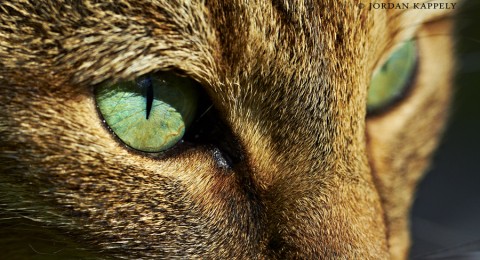The secret lives of our cats unveiled
Writing about the impact of cats on wildlife in urban areas may not attract many friends.

The secret lives of our cats have been uncovered by a recent Otago University study. Photo: Jordan Kappely
However we take it for granted to be able to hear the dawn chorus in urban environments,
and if we want to enjoy bird song in future we need to seriously address the decline of
birds in rural and urban areas.
Here are a few facts that may be surprising. About 46 % of households in New Zealand
own one or more cats, this is one of the highest rates of cat ownership in the world.
Recent research undertaken in Dunedin by the University of Otago on the impact of cats
on native and exotic urban bird populations revealed some astonishing figures.
The following chart shows the numbers and species the 144 surveyed cats caught and brought back
over a 12 month period.
Birds were the most common prey, followed by rats and mice. Only one third of observed
cats never brought back any prey. Of the birds caught 45 % were native and 55 % exotic
birds such as thrushes and sparrows. Young cats, less than one year old, killed more prey
than older cats. Cats brought home about half of their prey during the day, with birds
mostly taken in the morning, reptiles in the afternoon and mammals in the evening.
The study estimated the domestic cat population of urban Dunedin to be around 14,660
cats. Shown below are the huge annual rates of kill of three native species, bellbirds,
fantails and silvereyes, and three exotic bird species, blackbirds, house sparrows and
song thrushes.
The extent of annual catch of these species means that the bird population in Dunedin is
being reduced annually. Birds just do not breed enough to sustain the decline caused by
thousands of cats. In fact there is a high probability that silvereye will become extinct in
urban areas if this very high kill rate persists.
How can this trend be reversed? Research shows that reducing the number of cats per
household is the most effective way to halt the destruction of birdlife. Technology also
provides some options such as: using belled collars, collar-mounted electronic sonic
devices or cat bibs.
To keep cats inside at night is most likely counter-productive as this is when cats catch
introduced mammals such as rats and mice. However, cats obviously prefer birds to
mammals and it is our responsibility to do something about the decimation of birds by the
domestic cat.
Reference: Do domestic cats impose an unsustainable harvest on urban bird populations? Yolanda van Heezik *,
Amber Smyth, Amy Adams, Joanna Gordon. Department of Zoology, University of Otago, P.O. Box 56,
Dunedin 9054, New Zealand
